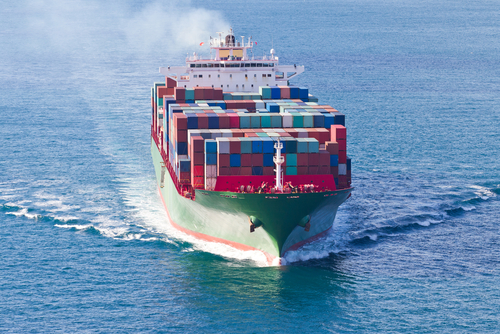U.S. Policy Supports Freedom of Navigation in the South China Sea

Please note that we are not authorised to provide any investment advice. The content on this page is for information purposes only.
The South China Sea is not the central strategic element in the overall US–China relationship. It was clearly not a centrepiece of the November 2014 Obama–Xi summit in Beijing. Climate change, North Korea, Iran, Taiwan, trade, intellectual property theft and cyber security are more important bilateral issues. But, since 2012, China has been taking a more assertive stance towards territorial disputes in the South China Sea — raising significant policy questions for the United States.
The South China Sea is not the central strategic element in the overall US–China relationship. It was clearly not a centrepiece of the November 2014 Obama–Xi summit in Beijing. Climate change, North Korea, Iran, Taiwan, trade, intellectual property theft and cyber security are more important bilateral issues. But, since 2012, China has been taking a more assertive stance towards territorial disputes in the South China Sea — raising significant policy questions for the United States.
China has controlled all of the Paracel Islands since 1974 when it forcefully ejected South Vietnamese forces. Despite Vietnam’s continuing claim to sovereignty, China is unlikely to leave. China also effectively resolved the dispute with the Philippines over Scarborough Shoal in 2012 when it established control over the shoal. Again, it is unlikely to relinquish it. This means that the Spratly Islands (with overlapping claims from China, Taiwan, Vietnam, the Philippines, Malaysia and Brunei) are the only remaining disputed area in the South China Sea not completely under the physical control of China.
Washington takes no position on sovereignty disputes in the South China Sea, but it does oppose states engaging in destabilising behaviour in pursuit of sovereignty claims.
The current US policy towards the South China Sea rests on the most important US interest — freedom of navigation. US policy exhorts all parties to follow the rules of international law as the surest way to achieve stability. It also explicitly defines how Washington would like to solve conflicts (through peaceful negotiations) and includes hard-power initiatives aimed at redressing some of the power imbalances between the Philippines, Vietnam and China. US policy further incorporates an element of deterrence by not ignoring America’s security alliance with the Philippines as well as providing access for US naval and air forces in Singapore and the Philippines.
Washington’s public rhetoric has, over time, become far more specific and less diplomatic. It now specifically calls China’s actions destabilising and bullying. The US has also become more specific in its commentary regarding the rules governing sovereignty disputes. The US has especially criticised the most destabilising aspect of the disputes in the South China Sea: China’s nine-dash line.
Unfortunately, China has largely ignored US exhortations to follow the rules, to stop pushing other claimants around and to seek third-party arbitration to resolve claims. Beijing apparently believes that national interest trumps adherence to international law.
So what should the US do?
I argue that South China Sea policy should not be overwhelmingly anti-Chinese. The United States should criticise Chinese behaviour, along with the behaviour of American friends and allies, when warranted. When it comes to the South China Sea, Washington should not announce policies it is not prepared to back up.
The United States should issue a comprehensive white paper on the abuse of various aspects of international law by China and other claimants in the South China Sea.
US officials have publicly supported a request for arbitration from the Philippines that, among other things, seeks to clarify whether China can make a maritime claim based on the nine-dash line. But the tribunal could rule that it does not have jurisdiction. That would be a major setback to hopes that international law can be the basis for shaping the behaviour of parties involved in South China Sea disputes. The US Department of State should publicly highlight the importance of allowing the Philippines to have its day in court.
The US should also help South Sea littoral states help themselves through improvements in surveillance, command and control, and policing of their respective maritime domains. The United States also needs to be completely committed to a very long-term and dedicated effort to improve the maritime capabilities of the Armed Forces of the Philippines. Both sides need to agree upon a ‘minimum credible deterrence’ plan.
US naval and air presence in the South China Sea should be a visible daily occurrence. To that end, the US should increase the duration of its exercises with South China Sea littoral states and expand participation in these exercises by inviting participation from other Asian maritime states, such as Japan, Australia, South Korea and possibly India. This will increase US presence in the region and illustrate that other maritime states are concerned about stability in the South China Sea.
Finally, Washington should ensure that planned US military posture and capability improvements in East Asia portray symbols of reassurance and stability and are not characterised as attempts to confront China. The US must emphasise that the objective of the military portion of the administration’s rebalance is to ensure that the United States can fulfil its security responsibilities to its allies and friends.
What should US policy be in the South China Sea? is republished with permission from East Asia Forum




